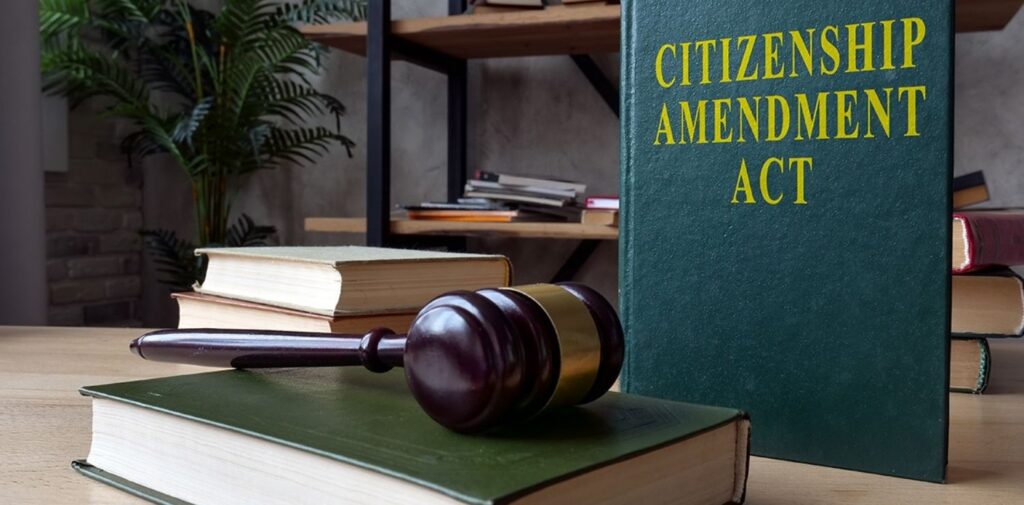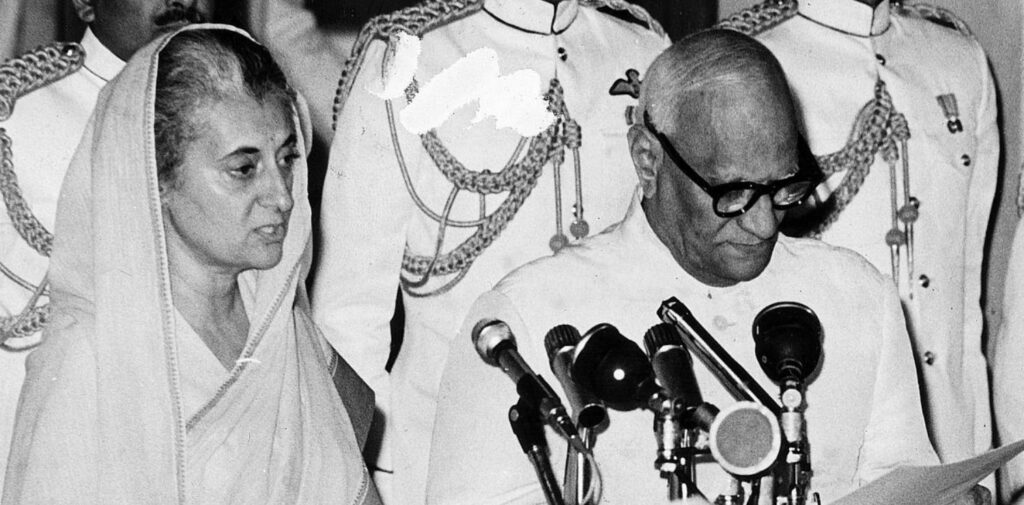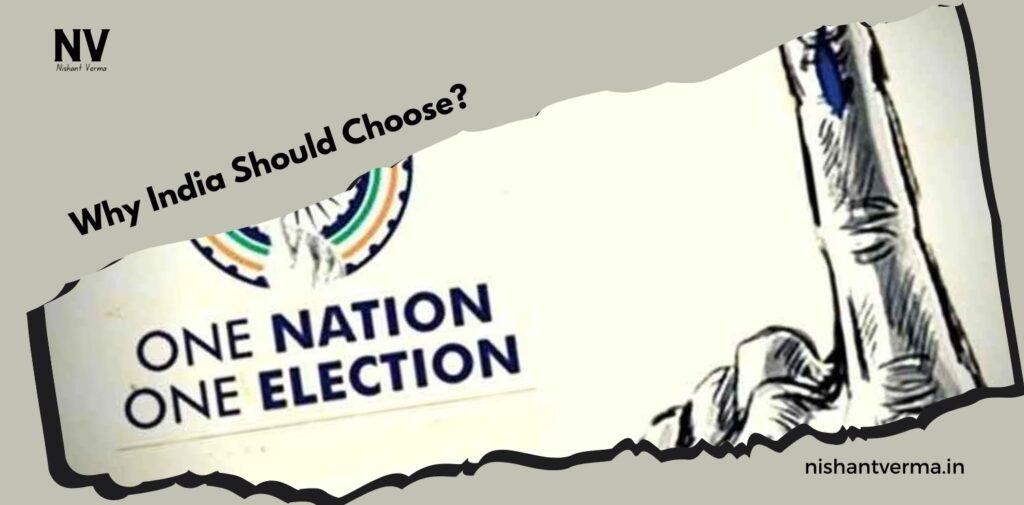In a diverse and complex democracy like India, the idea of conducting simultaneous elections for the Lok Sabha (the lower house of Parliament) and State Legislative Assemblies has gained momentum. Known as the “One Nation One Election” (ONOE) policy, it aims to streamline the electoral process, reduce costs, and enhance governance efficiency. This article explores the rationale behind adopting this policy, the expected benefits, potential challenges, and a critique of historical precedents, particularly the actions of former Prime Minister Indira Gandhi that contributed to the current electoral landscape.
Understanding One Nation, One Election
The One Nation, One Election policy proposes holding elections for the Lok Sabha and all State Legislative Assemblies simultaneously, rather than staggered elections. This concept is not new; it has been discussed for decades and has garnered attention in light of the increasing financial and administrative burdens of conducting frequent elections.

Key Features of ONOE
- Simultaneous Polling: Elections for both national and state legislatures would occur on the same day, reducing the frequency of elections and the accompanying disruptions to governance.
- Cost-Effectiveness: By conducting simultaneous elections, the government could save significant funds that are currently spent on multiple election cycles. Estimates suggest that this could save billions of rupees over time.
- Administrative Efficiency: Organizing elections is a massive logistical exercise. Simultaneous elections would reduce the strain on electoral officials and resources, allowing for better allocation and management of administrative tasks.
- Increased Voter Participation: With elections happening less frequently, voter fatigue could be reduced, potentially leading to higher turnout rates.
- Stable Governance: Frequent elections can lead to instability in governance, as elected officials spend a considerable amount of their tenure campaigning rather than governing. ONOE could foster a more stable political environment.
Facts and Figures
According to reports, the cost of conducting elections in India has been rising sharply. For instance, the Election Commission of India estimates that conducting Lok Sabha elections costs around ₹4,500 crore, with state elections adding to this expenditure. By implementing ONOE, it is projected that India could save approximately ₹1,000 crore every election cycle, allowing for better allocation of public resources. Moreover, India currently experiences elections every few months, with various states going to the polls at different times. This results in the constant presence of electioneering, which can disrupt governance and policy implementation.
Acts and Amendments Required
Implementing the ONOE policy will require several constitutional amendments, particularly to the following articles of the Constitution of India:

- Article 83: This article governs the duration of the Lok Sabha and State Legislative Assemblies. Currently, Lok Sabha members serve for five years, while state assemblies can be dissolved earlier. To synchronize the terms, amendments would need to address the dissolution timelines of state assemblies.
- Article 172: This article defines the duration of state legislative assemblies, allowing them to be dissolved before the completion of five years. Changes would be required to ensure uniformity in the election cycles of state assemblies and the Lok Sabha.
- Article 356: This article empowers the President to impose President’s Rule in a state if the constitutional machinery fails. Implementing ONOE could lead to complications if state governments dissolve prematurely, necessitating an amendment to prevent misuse of this provision during the synchronized electoral cycle.
- Representation of the People Act, 1951: This act outlines the conduct of elections in India. To facilitate simultaneous elections, amendments will be needed to redefine the electoral processes for both Lok Sabha and state assemblies.
- Election Commission Act, 1991: The provisions governing the Election Commission’s powers and responsibilities may require amendments to enhance its role in managing simultaneous elections effectively.
Challenges in Implementing One Nation, One Election
While the ONOE policy presents various advantages, it is not without its challenges and criticisms.
- Constitutional Amendments: The implementation of ONOE requires significant changes to the Indian Constitution, particularly in the provisions regarding the duration of legislative assemblies. Currently, state assemblies can dissolve before their term ends, leading to a mismatch with Lok Sabha elections. This requires a thorough legal examination and constitutional amendments.
- Political Opposition: Political parties with vested interests may oppose the ONOE policy, fearing it could disadvantage them. Many regional parties rely on state-level issues to garner support, and simultaneous elections could overshadow these local concerns, placing them at a disadvantage against national parties.
- Administrative Hurdles: Conducting simultaneous elections necessitates a massive logistical effort. The Election Commission would need to ensure that adequate resources, personnel, and security arrangements are in place across all states, which could be a daunting task.
- Voter Awareness and Engagement: Educating the electorate about the implications of ONOE will be crucial. Voter engagement and awareness campaigns will be essential to ensure that citizens understand the new electoral process and its significance.
- Disparity in Political Interests: India’s vast socio-economic diversity means that issues affecting voters vary significantly from state to state. Simultaneous elections could lead to a dilution of these local issues, causing discontent among voters who feel their specific concerns are not being addressed.
Historical Context: Indira Gandhi and Electoral Challenges
To understand the significance of ONOE, it is essential to reflect on the historical context of Indian elections. The period during Indira Gandhi’s tenure as Prime Minister marked a crucial juncture in Indian politics. Her decision to impose the Emergency from 1975 to 1977 is a notable example of how political power can undermine democratic processes.
Indira Gandhi’s actions, which included the suspension of elections and the curtailment of civil liberties, set a precedent for political expediency over democratic norms. This period saw the centralization of power and a weakening of state governments, leading to an erosion of trust in the electoral process.

Today, the ONOE policy can be seen as an opportunity to break free from the fragmented electoral cycle that has emerged as a consequence of decades of political maneuvering. By moving towards a more unified electoral system, India can re-establish a sense of democratic integrity and accountability.
Conclusion: A Path Forward
The One Nation, One Election policy presents a compelling case for reforming India’s electoral process. With its potential to reduce costs, enhance governance efficiency, and stabilize the political landscape, ONOE aligns with the broader objectives of good governance and public accountability.
However, it is essential to navigate the challenges associated with its implementation, particularly the need for constitutional amendments and the necessity of addressing the concerns of regional parties. A transparent dialogue among stakeholders, including political parties, civil society, and the electorate, will be vital to the successful adoption of ONOE.
In conclusion, as India seeks to strengthen its democratic foundations and streamline its governance, adopting the One Nation, One Election policy could be a significant step towards achieving a more effective and accountable political system. Breaking the historical chains of fragmented electoral cycles can pave the way for a brighter future, ensuring that the focus remains on governance rather than perpetual campaigning.




